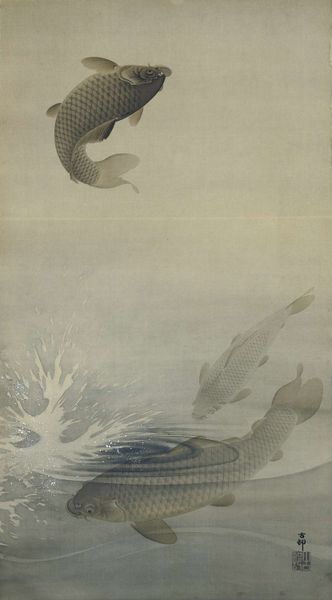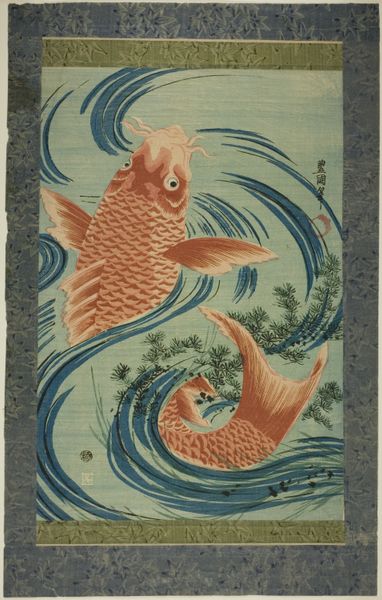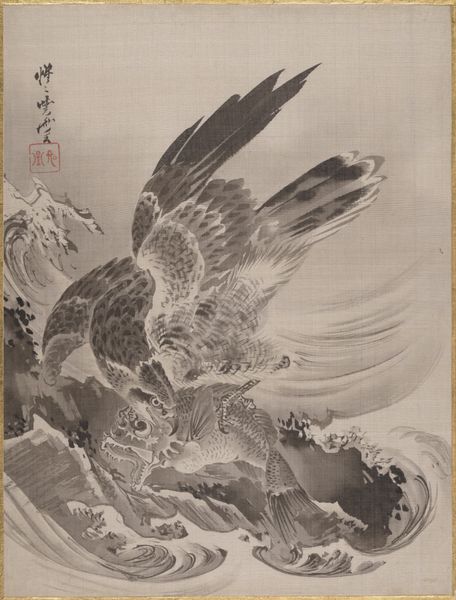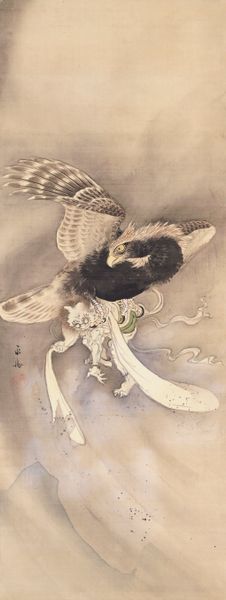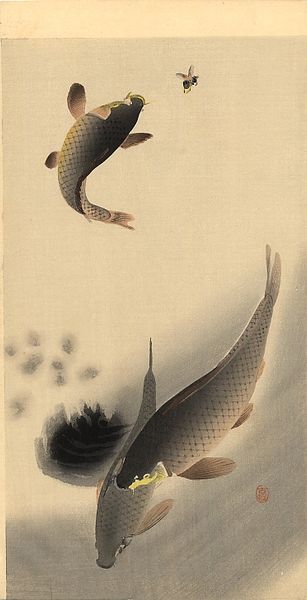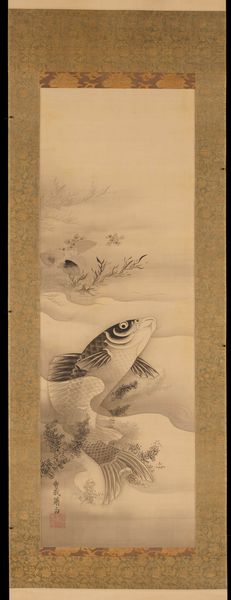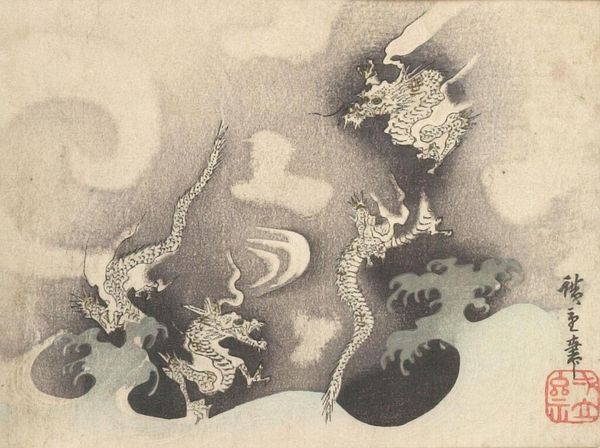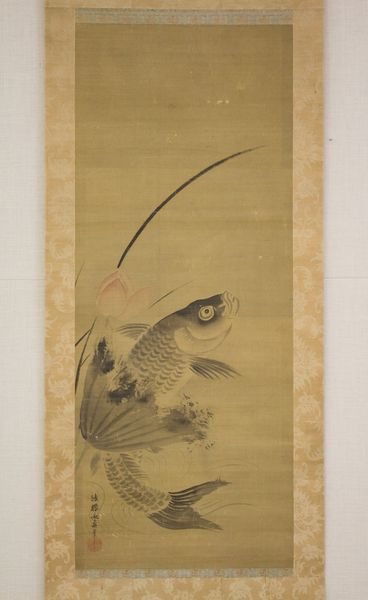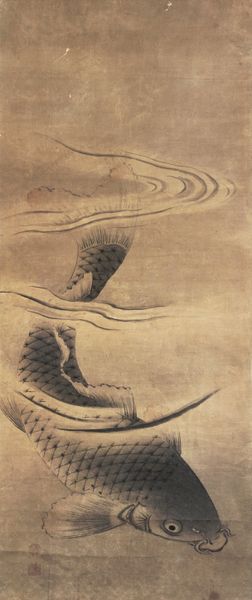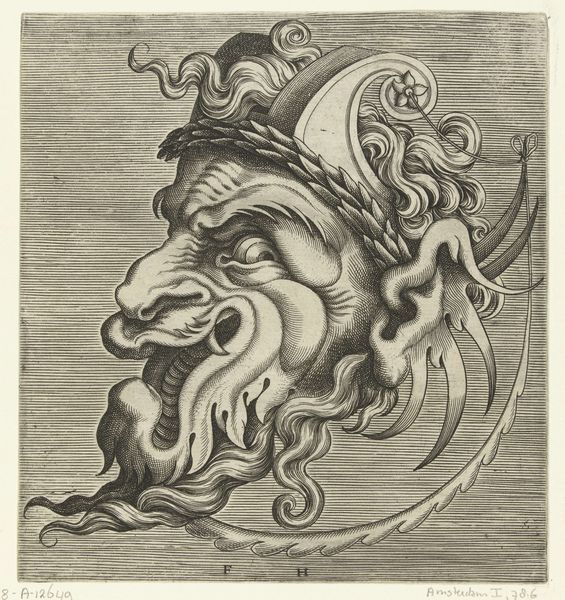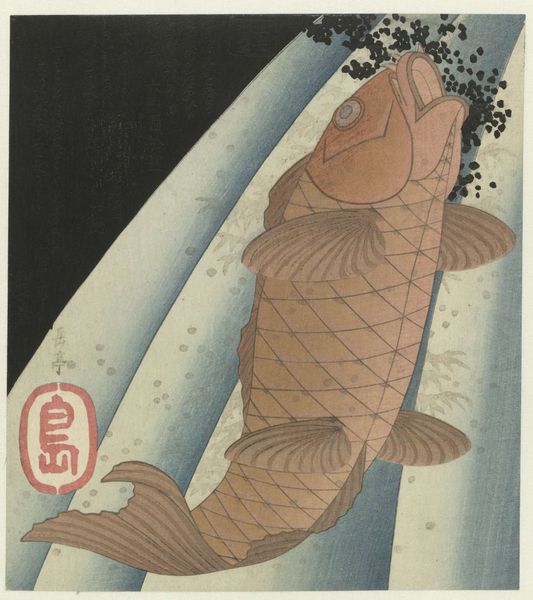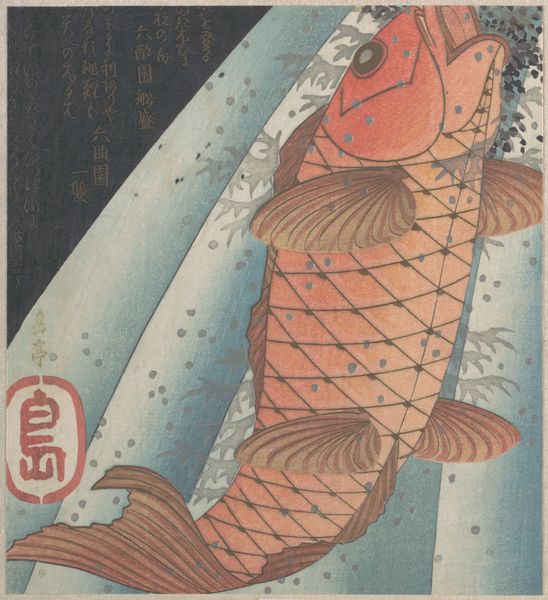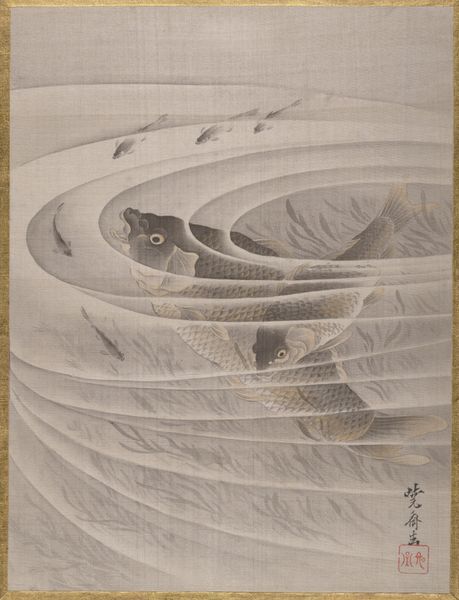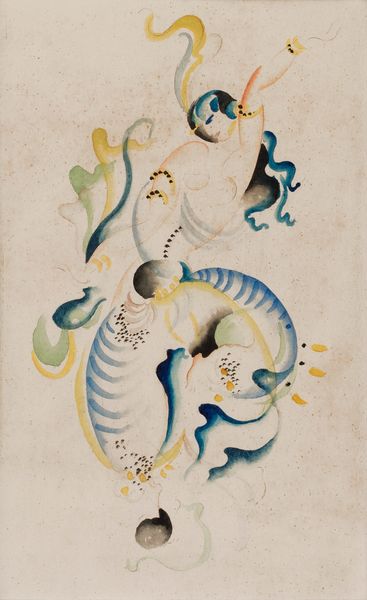![Carp Leaping Out of Water [right of a pair of Carps] by Tsukioka Settei](/_next/image?url=https%3A%2F%2Fd2w8kbdekdi1gv.cloudfront.net%2FeyJidWNrZXQiOiAiYXJ0ZXJhLWltYWdlcy1idWNrZXQiLCAia2V5IjogImFydHdvcmtzLzNlMWM4OTE5LTkwMGYtNGZjYy1hOGQzLWJjZmY4M2M1NDQyYi8zZTFjODkxOS05MDBmLTRmY2MtYThkMy1iY2ZmODNjNTQ0MmJfZnVsbC5qcGciLCAiZWRpdHMiOiB7InJlc2l6ZSI6IHsid2lkdGgiOiAxOTIwLCAiaGVpZ2h0IjogMTkyMCwgImZpdCI6ICJpbnNpZGUifX19&w=3840&q=75)
Carp Leaping Out of Water [right of a pair of Carps] 1777
0:00
0:00
drawing, print, paper, ink-on-paper, ink
#
drawing
# print
#
asian-art
#
landscape
#
ukiyo-e
#
paper
#
ink-on-paper
#
ink
#
pencil drawing
#
orientalism
#
realism
Dimensions: 50 11/16 × 21 3/16 in. (128.75 × 53.82 cm) (image)78 9/16 × 27 3/8 in. (199.55 × 69.53 cm) (mount, without roller)
Copyright: Public Domain
Tsukioka Settei made this painting of a carp leaping out of water with ink and color on paper in 18th-century Japan. The image creates meaning through visual codes, cultural references, and historical associations. In Japanese culture, the carp symbolizes perseverance and determination because of its ability to swim upstream and leap over waterfalls. The painting may also comment on the social structures of its own time, as the Edo period was a time of great social and economic change in Japan. The rising merchant class began to challenge the traditional social hierarchy, and the carp, as a symbol of perseverance, may have been seen as a symbol of this challenge. Also the Kano school of painting, to which Settei belonged, was patronized by the shogunate which oversaw these complex social changes. Understanding the art of the Edo period benefits from knowledge of the political, economic and cultural conditions. Research into the Kano school and Japanese symbolism will greatly enrich your appreciation.
Comments
minneapolisinstituteofart about 2 years ago
⋮
As koi (the Japanese word for carp) also means love, the carp is one of the emblems of good luck and two carp represent marital happiness. The strength expressed by the right carp might suggest that he is the male, whereas the elegantly swimming carp is the female. The right carp is captured in profile when he is almost completely out of the water and only his tail fin is still inside. The outlines of the waves that surround him were drawn with powerful, broad brush strokes that indicate the energy with which the water was dispersed. Much to the contrary, the left carp is quietly swimming in the water. Her body is depicted in a round S-form and her dorsal and tail fins create undulations. Tsukioka Settei (1710–1787) lived in the Osaka-Kyoto area where he was active as a painter, printmaker, and also book illustrator. Settei eventually founded his own branch of the popular ukiyo-e painting style. His paintings date from the latter half of his life. This pair of carp was painted in the winter of 1777 (tenth month) when Settei was 67 years old.
Join the conversation
Join millions of artists and users on Artera today and experience the ultimate creative platform.
